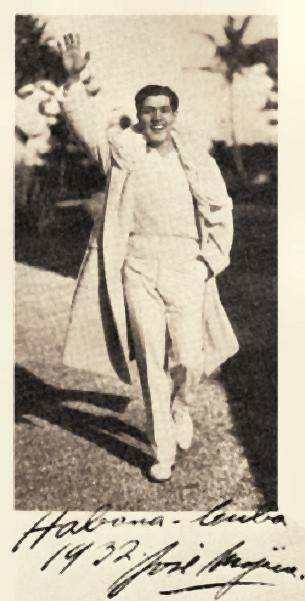After the early death of his father, his mother moved to Mexico City, where he grew up. He wanted to study agronomy, but ended up training his
voice instead at the Conservatorio Nacional de Música, with José Pierson.
He started his career at the Teatro Ideal in Mexico City, in small roles; his first main role was Almaviva at the Teatro Arbeu in the same city,
on 5 October 1916. Before long, he emigrated to New York City, hoping for a breakthrough – and working as a dishwasher at a restaurant
meanwhile.
But he actually made it big: from 1919 to 1933, he sang opera in Chicago, first comprimario parts only, later also main roles: Rodrigo, Cassio,
Beppe, Léopold, Corentin (Dinorah), Shujskij, Narraboth, Paco (La vida breve), Araquil (La Navarraise by Massenet),
Rodolfo, Pinkerton, Rinuccio, Pelléas (a major success). In the world premiere of L'amour des trois oranges, he was the Prince. He
also sang a lot at Chicago's summer festival in Ravinia. Guest appearances in San Francisco.
From 1930, his career took a considerable turn: he began to shoot films in Hollywood, which soon became his sole occupation. In 1938, he returned
to Mexico, and shot more films there. In 1940, he sang opera for the last time in Chicago (as Fenton in Falstaff).
But the same year 1940, his mother died, and he fell into a depression... from which he only emerged by another, definitely surprising turn in
his career: he became a Franciscan monk in Cuzco (Peru) in 1942, and was ordained to the priesthood in 1947. So as to raise money for a
missionary seminary, he returned to singing in 1954, making a 14-month concert tour of Latin America; a total of 800'000 people attended those
concerts! He also appeared in two more films (one based on his autobiography, where he participated but didn't play himself, the other on a
religious subject, with the script written by himself). He was still (or again) very popular in the 1950s, and also made more recordings. But he
spent the entire rest of his life in various monasteries in Peru, where he is buried at the abbey of San Francisco in Lima.
Reference 1: Kutsch & Riemens, reference 2
